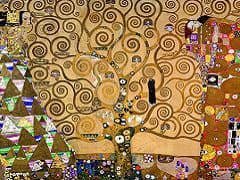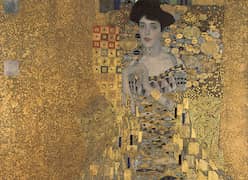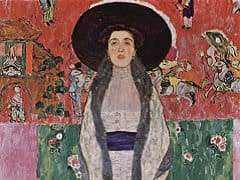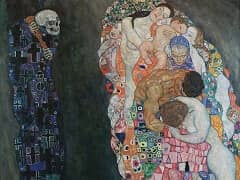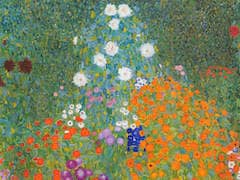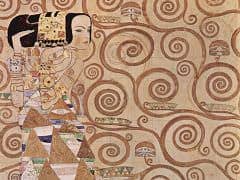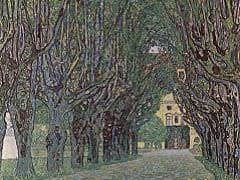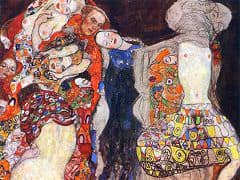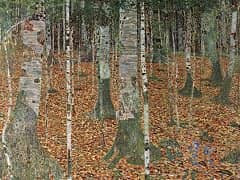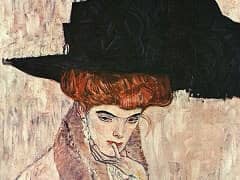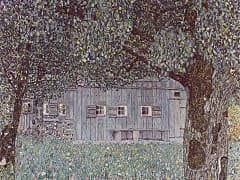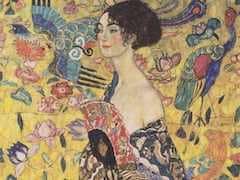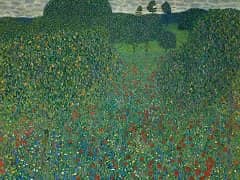Country Garden with Crucifix, 1911 by Gustav Klimt

This, the first of Klimt's truly religious paintings, in terms of depicting specific Christian imagery, has a haunting and powerful visual presence with the paradox of its simple rustic charm set
against one of his typical decorative backdrop. The icons are fixed in a columnar structure of life which forms a wild vibrant floral mass growing up through the religious station. Unlike the
previous farmhouse landscape from the same period, there is a greater sense of spatial depth and a brighter, more convincing management of light. The looser feel in this work is apparent
as nature exudes a more rhythmic quality. Klimt s tentative moves in to Expressionism, with its strong linear feel and brighter color range, are perceptible alongside the continuing influence of
Vincent Van Gogh.
The historical significance of the work's period, painted as it was in the final years before the First World War, must not be forgotten. Tensions were mounting in the region as Austria's
weakening, decadent empire completed its demise with misplaced aggression in the Balkans, plummeting Europe into the chaos of the war in 1914. The small simple crucifix, lonely and isolated in
Klimt's beloved countryside haven, possibly appealed to him as a beacon of hope.


